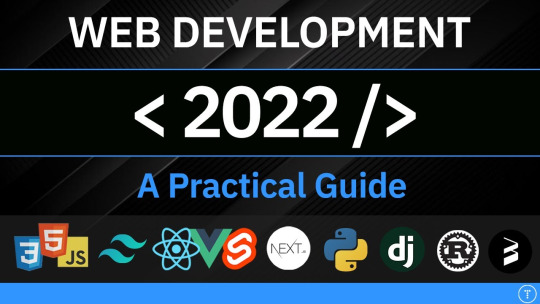#Codedamn
Explore tagged Tumblr posts
Text
Codedamn Reviews – Career Tracks, Courses, Learning Mode, Fee, Reviews, Ratings and Feedback

Codedamn is on a mission to be the gateway platform for learning programming for aspiring developers worldwide. As an ed-tech company, they are building interactive learning technology at scale, with a strong focus on community engagement.
Let’s explore Codedamn Review
Career Tracks and Courses Codedamn provides a diverse range of courses, catering to different career tracks. Whether you���re a beginner or an experienced developer, there’s something for everyone:
Web Development: Dive into HTML, CSS, JavaScript, and frameworks like React and Angular. Backend Development: Learn server-side technologies such as Node.js, Express, and databases. Mobile App Development: Explore mobile app development using React Native or Flutter. Data Science and Machine Learning: Master Python, data analysis, and ML algorithms. DevOps and Cloud: Understand Docker, Kubernetes, AWS, and Azure. Learning Modes Codedamn offers flexible learning modes:
Interactive Coding Challenges: Practice coding in a hands-on environment. Video Tutorials: Learn from expert instructors through video lessons. Projects and Real-world Scenarios: Apply your skills to real projects. Fees Codedamn operates on a freemium model, allowing free access to essential content. For more advanced features and personalized learning, they offer premium plans at reasonable prices.
Reviews and Ratings Let’s hear from the community:
David Kocsis (92 reviews): David recommends Codedamn and shares his positive experience with the platform. However, individual experiences may vary. Trustpilot Reviews: Codedamn has an average rating of 3.2 stars based on user feedback. Some users appreciate the interactive learning approach, while others have concerns. Feedback and Conclusion Codedamn encourages constructive feedback and values verified reviews. As you explore their courses, remember that real people and real companies contribute to the platform. Whether you’re a beginner or an experienced coder, Codedamn aims to empower you on your coding journey.
In conclusion, Codedamn is a promising platform for those eager to learn and grow in the world of code. Dive in, explore, and let your coding adventure begin!
0 notes
Text
✨ Codedamn Review Just In! 📝
🎉 Another Learner's Voice Matters! 🎉
We’re thrilled to share that Sachin K Singh recently visited our platform Analytics Jobs — India’s only course reviews platform — and dropped his honest feedback on the Codedamn Data Science Career Track. 🙌
✅ Wondering if Codedamn is the right fit for your Data Science journey? ✅ Curious about the course quality, learning experience, fees, or real career outcomes?
Head over to this review page 👇 🔗 https://analyticsjobs.in/question/codedamn-reviews-career-tracks-courses-learning-mode-fee-reviews-ratings-and-feedback/
📌 Read what others are saying 📌 Drop your own experience 📌 Make an informed decision before enrolling 🎯
Your feedback could help thousands of learners make the right choice! 💬
#DataScience #Codedamn #CourseReview #AnalyticsJobs #EdTechReviews #LearnerVoices #CareerInDataScience #HonestReviews #UpskillWithConfidence #StudentFeedback #LearningCommunity

0 notes
Text
🔍 Hear What Students Say About Codedamn’s Data Science Course! 🚀
🎯 Make Informed Decisions with Real Reviews!
📢 Thinking about enrolling in Codedamn’s Data Science Course? Before you take the next step, check out what real learners have to say!
Sachin Singh recently visited Analytics Jobs and shared his honest review about Codedamn’s Data Science Course. Our platform is India’s only dedicated course reviews hub, helping students and professionals make confident choices about their learning journey.
🔍 Why check reviews before enrolling? ✅ Authentic feedback from real learners ✅ Course insights – Learning modes, fee structure & more ✅ Compare & decide the best edtech courses for your career
🔗 Read or add your own review here: Codedamn Reviews & Ratings
Your experience matters! Help others by sharing your insights while making a well-informed choice for yourself. 🚀
#AnalyticsJobs #Codedamn #CourseReviews #StudentFeedback #EdTechReviews #DataScience #Upskilling #CareerGrowth
0 notes
Text

Hiya! Just wanted to share some Web Dev learning course videos I found really helpful! They're all pretty long and full of content! These videos can be the foundation of your web development journey and be used as a reference! If you do decide to work through the videos, do remember to code along - the best way to learn is by doing and, with programming especially, creating projects as well to apply what you've learned!
Most of the videos, if not at all, cover things like:
HTML5
CSS3
JavaScript
Responsive Design + Mobile design
jQuery
GitHub Tutorials
Tailwind CSS fundamentals
React fundamentals
Node.js
Next.js and more!
Now, onto the videos themselves below!

Web Development Tutorials For Beginners playlist by LearnCode.academy [link] 💻
Covers: HTML5, CSS, JavaScript, GitHub, Responsive Design

Full Course Web Development [22 Hours] | Learn Full Stack Web Development From Scratch by Codedamn [link] 💻
Covers: HTML5, CSS, JavaScript, React, Tailwind CSS, React Query, Node.js, Next.js

Full Stack Web Development for Beginners by FreeCodeCamp.org [link]
Covers: HTML, CSS, JavaScript, Node.js, MongoDB

Introduction To Responsive Web Design by FreeCodeCamp.org [link]
Covers: HTML, CSS, Flexbox, Media Queries

Web Development In 2022 - A Practical Guide by Traversy Media [link]
Covers: HTML, CSS, JavaScript, Sass, PostCSS, TypeScript fundamentals, Testing, Databases, GrapghQL, WordPress, REST APIs, UI kits & Libraries, Moblie Development fundamentals, Web3

Front End Development Full Course 2022 | Front End Development Tutorial For Beginners by Simplilearn [link]
Covers: Git and GitHub, HTML, CSS, JavaScript, ReactJS, Angular

Learn Web Development from Scratch by Edureka [link]
Covers: HTML, CSS, JavaScript, Node.js, Express.js, MongoDB, TypeScript
┌── ⋆⋅☆⋅⋆
Well, that’s all! I hope the videos are helpful!! 😋
Have a nice day/night and happy programming 👍🏾💗
└── ⋆⋅☆⋅⋆
#xc: programming blog post#resources#coding resources#my resources#study resources#programming resource#programming#productivity#coding study#coding#learn to code#coder#computing#computer science#code#100daysofcode#100 days of productivity#projects#programmer#html#css#javascript#big data#node#project#learn how to code#how to code#100 days of code#codeblr
225 notes
·
View notes
Link
7 notes
·
View notes
Photo

I don't think I could possibly love her more.










DAY 28 | Three Little Words (3/3)
Jasmine: *sigh* Now this…is precious. What a breath of relief after this whirlwind of a week, am I right? Things between Noor and Shea might not be as irreparable as we thought. In any case, one thing is for sure: next week, it’ll be anyone’s game. From outside the Big Brother house, I’m Jasmine Holiday. Good night.
@ommsims @gecko-sims
26 notes
·
View notes
Link
Learn about today's job skills - frontend, backend, fullstack, mobile app development and practice online with thousands of developers. codedamn is the best way to learn to code online. Start with HTML, CSS, JavaScript, SQL, Python, Data Science, and more.
#learn coding#backend course#frontend course#web3 full course#become fullstack developer#become backend developer#become frontend developer#learn html css#learn programming online
1 note
·
View note
Photo

منصة Codedamn الجديدة نسبيا لتعلم البرمجة مع 10 ساعات من التدريب المجاني كل شهر https://ift.tt/32foBut
0 notes
Photo

Codedamn: una plataforma para enseñarte a ti mismo a programar con 10 horas de prácticas gratis al mes: Codedamn es una pequeña y relativamente nueva plataforma para aprender a programar en donde el principal responsable de lo que logras aprender eres tú mismo. En el sitio, los usuarios pueden recrear proyectos del mundo real en línea con las aulas o classrooms de Codedamn. via Pocket https://ift.tt/3GZ8wZT
0 notes
Text
Popular Design News of the Week: September 28, 2020 – October 4, 2020

Every week users submit a lot of interesting stuff on our sister site Webdesigner News, highlighting great content from around the web that can be of interest to web designers.
The best way to keep track of all the great stories and news being posted is simply to check out the Webdesigner News site, however, in case you missed some here’s a quick and useful compilation of the most popular designer news that we curated from the past week.
6 Great Open Source SVG Icon Libraries You Should Check Out Now

Codedamn – Teach Yourself to Code

Zoop – Unlimited Serverless Hosting

Sitemaps: A Complete Guide

Shoelace 2.0: A Forward-thinking Library of Web Components

How to Become a UX Designer – No Matter What You Studied at Uni

Buttons that Spark Joy

How to Solve any Design Problem by Understanding its Roots

Ooooops I Guess We’re* Full-Stack Developers Now

Blue People Illustrations, or How to Kill a Brand

How to Pick More Beautiful Colors for your Data Visualizations

Stop Doing Design System Projects

Please Don’t do That: 4 Things to Ask Clients to Avoid

What’s Driving so Many Car Brands to Redesign their Identity?

How to Prepare Sites for 2020 Holiday Shopping

Nova

Show Off your Design Skills by Crafting Eye-Catching iOS 14 Layout Themes

How to Create Onboard and Login Screens for a Dating App Template in Figma

Bidirectional Scrolling: What’s not to Like?

Basic Guidelines to Product Sketching

The Era of UI Unification

The Typography of Star Trek: The Motion Picture

The Guide to UX Research

In Search of Illustration: Design Process for Illustration Set

Looking at an Online School Through a Web Designer’s Eyes

Want more? No problem! Keep track of top design news from around the web with Webdesigner News.
Source from Webdesigner Depot https://ift.tt/2Gf04LF from Blogger https://ift.tt/2GFFZ0w
0 notes
Text
Why You Should Learn Next.js as a React Developer
We can all likely agree on one thing: React is one of the most popular solutions out there for building interactive web applications, both small and large.
And it is used by so many startups and companies that it is a very valuable skill to have these days.
I discovered Next.js a couple of years back, and was intrigued with what it was trying to accomplish.
In this post, I'll describe my personal journey with Next.js. I'll also discuss why I believe that it is the right time to add it to your React stack.
The Early Web
Back in the mid-2000s, when the web was young and growing, developers moved from static only HTML pages to more robust and dynamic solutions.
This gave us the ability to create pages with dynamic content using tech like PHP (mind you, JavaScript was very young and non-performant at this time).
You could have a single profile.php page and it would take care of Alice, Bob, John, Mehul, and all 15,000 registered people on your website – very convenient.
Then came the JavaScript age. People started realizing that there was this language supported for the web which could be used for so much.
You could set up dynamic form submission, background HTTP requests, nice scrolling effects, and even create webpages on the fly.
The rise of JavaScript and libraries like jQuery allowed web developers to create nice interfaces fully customizable with JavaScript.
Soon, every web developer started pushing more and more JavaScript down the network to the client. Sure, technology evolved, mobile phones and PCs became better with more RAM and cores, but JavaScript started evolving faster.
More functionalities, more features, and more frameworks meant a better user experience and the ability to create an app-like feeling on the web.
But this also meant pushing more and more JavaScript down the network on devices that could not keep up with evolving JavaScript limits.
The Web was made for HTML

Old, slow mobile devices started giving up - load times became high, there was more lag, JS engines were less powerful, and there was just so much JavaScript to parse!
With frameworks like React and Angular, you're basically pushing huge JavaScript bundles to clients which first have to download the small HTML pages.
Web developers who moved from the PHP age (server-rendered HTML) to the JavaScript age (client rendered HTML) soon started realizing that they screwed up big time.
React was great for interactivity and high-performance components, but the fact that people starting using these tools to build everything started to create problems for clients.
A simple About Us page, which could be a very simple static HTML/CSS page, was now a page with a whopping JS bundle. The browser first had to download, then parse, then execute, and then change the DOM to display the content.
This was bad for everyone. Clients had higher load times. Browsers had to work hard to run JS (browsers parse and run HTML/CSS very efficiently). And search engines like Google and Bing had a hard time understanding what your page was about, because your source code never contained the real content. It was always embedded somewhere in your JS bundle.
People loved React and similar tools. But they also understood the implications of running too much JS client-side.
On the other hand, they loved how PHP worked, but they didn't like its architecture. So what was the solution?
Server-Side Rendering (SSR) – the best of both worlds
When developers realized that pushing too much React code on the client was a problem, they thought: Hey, is it possible to code in React, but ship HTML documents to clients?
After all, when the React code is done executing, all you really have is an HTML document anyway.
So they did it. Server-Side Rendering (SSR) for React was born.
Now, with SSR, you can write React code, somehow run it on the server (which was more powerful than your typical client device – like a mobile phone), and then send the HTML document to the client.
Win-win for everybody. You, as a developer, get to code in React - the technology you love. And the visitor on your site gets a plain HTML document (with visible content, and a little rehydrated JS), which gets a massive performance boost. Plus, Google loves you now.
Who wouldn't want that?
But it was too difficult
Server-side rendering definitely seemed like the solution to this problem. But the problem? It was too difficult to set up correctly.
Proper caching and cache-busting? Could you possibly create static HTML files for pages that didn't change? How should you build a seamless navigation experience on your website even if you have server-side rendered HTML? How should you ease down the load on your servers, or generate on-demand content?
And on top of all this, how do you set up this whole architecture? Sure, React and the web provides all the APIs for these, but they are quite verbose and usually a one-time setup.
If you're someone who's actually building something valuable, after some time you would want the majority of your time to be spent on the business logic of your application, and not on the underlying logic.
Introducing Next.js
Next.js is a framework born in heaven. It ships with:
Best SEO practices
Caching and Automatic Static Optimization built-in
Fully server-rendered pages
100% React support
Lambda function support (API routes)
Fine tweak your webpack/babel config if needed
And much more!
It abstracts away all those performance and development setups you need with a typical React app and allows you to focus only on what matters – your business logic code.
I had my first experience with Next.js 2 years ago when it was very young.
But Next.js 9.5 was released this year with so many features. And I think it's safe to say that it is one of the most powerful tools available in the web development ecosystem, especially if you're a React developer.
I run codedamn (a platform for developers to learn to code) myself on Next.js. There's a massive performance boost to the site compared to your regular React app.
If you're a React developer in 2020, one of the best skills you can learn is Next.js. Here are some benefits it offers you as a developer:
Definitely an emerging technology – more job opportunities and possibilities
Server rendered pages means better performance – more clients for you
SEO for your websites baked in – search engines love you
All the benefits of having a server in place – API routes, dynamic content fetching, and stale-while-revalidate feature (oh I love this one)
A great technical skill on your résumé
Some Next.js features I'm excited about
Next.js is evolving really fast. They deprecate old functionalities and introduce shiny new things all the time.
As of today, I'm super interested in the framework as a whole, but here are some of my top picks:
#1 Stable Incremental Static Regeneration
Simply speaking, this feature allows you to generate static content dynamically. Wait, what? Let's see a quick example:
Say you have a blog website (like this one) with a lot of articles. When somebody visits /news/[link] (where [link] is anything), you want to serve them the static page as fast as you can.
But it is possible that you don't want to create all static pages at build time because it would take you a lot of time. In a few cases, this isn't possible at all at build time.
Also, sometimes your content might change, like a quick blog edit - so you don't really want a completely static page forever either. So what's the solution?
Using Next.js 9.5+, now you can generate static pages dynamically to the dynamic path and refresh them.
This means that once Next fetches that particular URL, it'll save it as a static page and serve it statically whenever somebody visits the path. At the same time, it'll be open to accepting new paths dynamically.
Not only can you do this, with a revalidate parameter, you can also actually specify that Next.js should update your static pages once every X seconds in the background if there's any change!
#2 Webpack 5 Support
Next.js is heading towards Webpack 5 support too. This is exciting as Webpack 5 brings in some sweet performance and bundle optimizations and drops support for deprecated things in webpack 4, making the core lighter.
That means your Next.js apps will be faster than ever and more robust.
#3 Dropping of getInitialProps
I personally didn't like the concept of having a single function execute on both environments - getInitialProps.
Thankfully, Next.js figured out that there's a much better solution available and they brought in getServerSideProps and getStaticProps as two great methods with good names.
getServerSideProps, as the name suggests, allows you to inject props in your Next.js page from the server itself. And getStaticProps allows Next.js to still create static outputs at build time.
getStaticProps combined with incremental static regeneration is a killer feature in my opinion. You get the many benefits of a dynamic backend without having a dynamic backend.
#4 Persistent Caching for Page Bundles
Next.js now also supports persistent caches for pages that are not changed. Before, when you shipped a new Next.js app, Next.js would throw out the whole app and the user had to download all the CSS/JS again, even if those bundles were unchanged.
In the latest version of Next.js released last week, our friends at Vercel introduced persistent caching which is again an absolutely great thing to have performance-wise.
#5 Out of the box support for Sass Modules and TypeScript
If there's one thing I love more than JavaScript, it is TypeScript. And Sass is sweet too. Most people I know use Sass to power their CSS, and it provides a great developer experience.
Next.js has long offered great support for TypeScript out of the box. But recently they added module based support for Sass as well.
This means that your styles can now be written in Sass, local to your modules, with caching and revalidation - all managed by Next.js internally.
Seems like they really want you to develop the best products focusing only on the business logic.
Learning Next.js [a Course]
I'm creating an exclusive video course on Next.js with best practices, latest framework updates, and super cool things you can do with it. I'm including a bunch of full projects with the framework so you'll get a deep understanding of how to work with this tool.
If you're interested, sign up for early access using this Google form link and I'll make sure to reach out to you when it's out.
Conclusion
I'm going all in on Next.js. The speed with which they're iterating and developing the SSR concept and making it available to so many is just astonishing.
If you signed up using the form link above, expect to hear from me soon with some awesome content for you.
Feel free to hit me up on social media to share what you think: Twitter and Instagram.
0 notes
Link
Node.js 14 is out now, and with that release, it brings in Async Local Storage support. Now that might sound like "meh, okay, local storage has been around for some time", but this time, it's different.
For starters, this is the Node runtime we're talking about and not the browser. Thus, having a "localStorage" browser-like concept doesn't really make sense for Node. And the fact is, it is not the localStorage you're probably thinking of either. So what is it then?
Introducing Async Local Storage - Storage for asynchronous tasks
Consider a web server like Apache running PHP for hosting a website. When PHP receives a request from a client - your web server makes sure to spin off a new thread, and let that thread manage all the resources, local variables, function call stack, etc. for that particular request. Simple and easy. But the problem arises with JavaScript.
JavaScript is single threaded - that means you cannot have multiple threads of JS running together under a same parent process. But don't let it fool you, JS is as fast (even faster) as mature solutions like Java backend in handling web server requests. How does that happen? Well, that's something for another article, but the important thing here is that Node is single threaded, hence you do not have the benefits of thread local storage. Thread local storage is nothing but variables and functions local to a particular thread - in our case, for handling a particular user on the webpage.
Why is single thread a problem?
Single thread is a problem in this case as Node would keep executing synchronous code in one go as long as it doesn't exhaust all synchronous operations in the event loop. Then it'll keep a check on events and callbacks and execute that code whenever necessary. In Node, a simple HTTP request is nothing but an event fired by the http library to the node to handle the request - hence it is asynchronous. Now let's say you want to associate some data with this asynchronous operation. How would you do that?
Well, you can create some sort of "global" variable and assign your special data in it. Then, when another request comes from the same user, you can use the global variable to read whatever you had stored earlier. But it would spectacularly fail when you have more than 1 request on hand as now Node would not execute asynchronous code serially (of course, that's the definition of asynchronous!). Let's consider this dummy code (assume Node runtime):
server.listen(1337).on('request', (req) => { // some synchronous operation (save state) // some asynchronous operation // some asynchronous operation })
Consider this sequence of events:
User 1 hits the server on port 1337
Node starts running the synchronous operation code
While node was running that synchronous code, another User 2 hits the server.
Node would keep on executing the synchronous code, meanwhile the request to process the second HTTP request is waiting in the task queue.
When Node finishes synchronous operation part, and comes to asynchronous operation part, it throws it off in the task queue and then starts processing the first task sitting in the taskqueue - the second HTTP request.
This time it's running that synchronous piece of code, but on the behalf of User 2 request. When that synchronous code for User 2 is done, it resumes the asynchronous execution of User 1, and so on.
Now what if you want to persist specific data with that specific user whenever the asynchronous code specific to them is being called? Here's when you use AsyncStorage - storage for asynchronous flows in Node.
Consider this example straight from the official docs:
const http = require('http'); const { AsyncLocalStorage } = require('async_hooks'); const asyncLocalStorage = new AsyncLocalStorage(); function logWithId(msg) { const id = asyncLocalStorage.getStore(); console.log(`${id !== undefined ? id : '-'}:`, msg); } let idSeq = 0; http.createServer((req, res) => { asyncLocalStorage.run(idSeq++, () => { logWithId('start'); // Imagine any chain of async operations here setImmediate(() => { logWithId('finish'); res.end(); }); }); }).listen(8080); http.get('http://localhost:8080'); http.get('http://localhost:8080'); // Prints: // 0: start // 1: start // 0: finish // 1: finish
This example is showing nothing but the "stickyness" of the idSeq with the respective request. You can imagine how express populates "req.session" object with correct user everytime, in a similar fasion, this is a low level API using a lower level construct in Node called async_hooks which is still experimental, but is pretty cool to know!
Performance
Before you jump on to roll this out in production, beware that this is not something which I would really recommend anybody out there if not absolutely crazily needed. This is because it comes with a non-negligible performance hit on your application. This is primarily because the underlying API of async_hooks is still a WIP, and the situation should improve gradually.
Conclusion
That's basically it! A very simple brief introduction to what AsyncStorage is in Node 14 and what's the high level overall idea for it. If you want to learn all about new features in Node.js, check out this video for that:
Also, if you're an early adapter, try out codedamn - a platform for developers to learn and connect. I've been rolling out some sweet features there for you to try! Stay tuned.
Peace!
0 notes
Text
How to Create and Release NPM Package
Most of us may aware of the hosting packages on the NPM repository. So, In this article, we are going to learn about how to create and release NPM package on https://www.npmjs.com/
I have created and host the package https://www.npmjs.com/package/hello-world-by-mahesh
In this article, I’m going to share you how I have created this package and host it on the https://www.npmjs.com/
Without time waste lets try it step by step:
Create a Directory #Create a Directory
NOTE:
I’m creating the package called hello-world-by-mahesh because of the package name should be unique. For that, I am creating the NPM package called hello-world-by-mahesh and creating the GitHub repository called npm-hello-world. So, Don’t get confused.
Create a directory npm-hello-world where you want, I’m creating it in D:\xampp\htdocs\npm\
So, Open a terminal and navigate to the directory D:\xampp\htdocs\npm\ and creating the npm-hello-world with below command:
mkdir npm-hello-world
Then navigate inside the directory with:
cd npm-hello-world
Initialize Package #Initialize Package
Now, Type command npm init to initialize the NPM package.
Add the information which comes on the terminal screen. It something looks like below:
D:\xampp\htdocs\npm\npm-hello-world λ npm init This utility will walk you through creating a package.json file. It only covers the most common items, and tries to guess sensible defaults. See `npm help json` for definitive documentation on these fields and exactly what they do. Use `npm install <pkg>` afterwards to install a package and save it as a dependency in the package.json file. Press ^C at any time to quit. package name: (hello-world-by-mahesh) version: (1.0.0) description: Hello World entry point: (index.js) test command: git repository: https://github.com/maheshwaghmare/npm-hello-world keywords: npm-hello-world license: (MIT) About to write to D:\xampp\htdocs\npm\npm-hello-world\package.json: { "name": "hello-world-by-mahesh", "version": "1.0.0", "description": "Hello World", "main": "index.js", "scripts": { "test": "echo \"Error: no test specified\" && exit 1" }, "repository": { "type": "git", "url": "git+https://github.com/maheshwaghmare/npm-hello-world.git" }, "keywords": [ "npm-hello-world" ], "author": "Mahesh Waghmare", "license": "MIT", "bugs": { "url": "https://github.com/maheshwaghmare/npm-hello-world/issues" }, "homepage": "https://github.com/maheshwaghmare/npm-hello-world#readme" } Is this OK? (yes) yes
NOTE: Here, I have created the GitHub repository npm-hello-world but, I have set the package name as hello-world-by-mahesh. Because npm-hello-world is not unique and which is exists (https://www.npmjs.com/package/npm-hello-world).
Login to NPM #Login to NPM
Now, Use command npm login to login to your NPM account. e.g.
D:\xampp\htdocs\npm\npm-hello-world ([email protected]) λ npm login Username: maheshwaghmare Password: Email: (this IS public) [email protected] Logged in as maheshwaghmare on https://registry.npmjs.org/.
Okay. If you don’t have the NPM account then crate it at https://www.npmjs.com/ If you have already login.
Or
Do you want to see which account is currently logged in with?
Then use command npm whoami to see currently login username. E.g.
D:\xampp\htdocs\npm\npm-hello-world ([email protected]) λ npm whoami maheshwaghmare
Sample Code #Sample Code
In our sample package, we are creating the package which performs some mathematical operations.
These are addition, subtraction, multiplication and division.
Create a file index.js file and add below code into it:
/** * Addition of two numbers. */ module.exports.add = (a, b) => a + b /** * Subtraction of two numbers. */ module.exports.sub = (a, b) => a - b /** * Multiplication of two numbers. */ module.exports.mul = (a, b) => a * b /** * Dividation of two numbers. */ module.exports.div = (a, b) => a / b
Here, We have created the simple arrow functions add, sub, mul & div and export them with module.exports to use it in another project.
We’ll see how to use it in the below section. Before it let’s publish our NPM package.
Publish the Package #Publish the Package
Use command npm publish to publish your package. You can see something like below:
D:\xampp\htdocs\npm\npm-hello-world (master) ([email protected]) λ npm publish npm notice npm notice package: [email protected] npm notice === Tarball Contents === npm notice 305B index.js npm notice 569B package.json npm notice 133B README.md npm notice === Tarball Details === npm notice name: hello-world-by-mahesh npm notice version: 1.0.0 npm notice package size: 592 B npm notice unpacked size: 1.0 kB npm notice shasum: 7ef94b6b51f33fe3228729c8f47b707cefe5ffca npm notice integrity: sha512-WRH3ux869bUAP[...]wRWMINQQNSXuA== npm notice total files: 3 npm notice + [email protected]
You can see your published package at URL: https://www.npmjs.com/package/{package-name}
My package hosted on URL: https://www.npmjs.com/package/hello-world-by-mahesh
How to use it? #How to use it?
We have hosted our package https://www.npmjs.com/package/hello-world-by-mahesh on NPM repository which performs the mathematical operations.
Now, We are going to create another project use-package-hello-world-by-mahesh to use our package hello-world-by-mahesh within it.
I have kept the suffix hello-world-by-mahesh to avoid the confusion.
Let’s get started.
Create and navigate to the directory use-package-hello-world-by-mahesh with commands:
mkdir use-package-hello-world-by-mahesh
cd use-package-hello-world-by-mahesh
E.g.
D:\xampp\htdocs\npm λ mkdir use-package-hello-world-by-mahesh D:\xampp\htdocs\npm λ cd use-package-hello-world-by-mahesh
Now, Initialize the NPM with npm init e.g.
D:\xampp\htdocs\npm\use-package-hello-world-by-mahesh λ npm init This utility will walk you through creating a package.json file. It only covers the most common items, and tries to guess sensible defaults. See `npm help json` for definitive documentation on these fields and exactly what they do. Use `npm install <pkg>` afterwards to install a package and save it as a dependency in the package.json file. Press ^C at any time to quit. package name: (use-package-hello-world-by-mahesh) version: (1.0.0) description: entry point: (index.js) test command: git repository: keywords: license: (MIT) About to write to D:\xampp\htdocs\npm\use-package-hello-world-by-mahesh\package.json: { "name": "use-package-hello-world-by-mahesh", "version": "1.0.0", "description": "", "main": "index.js", "scripts": { "test": "echo \"Error: no test specified\" && exit 1" }, "author": "Mahesh Waghmare", "license": "MIT" } Is this OK? (yes)
Now, Install our package hello-world-by-mahesh with command npm i hello-world-by-mahesh e.g.
D:\xampp\htdocs\npm\use-package-hello-world-by-mahesh ([email protected]) λ npm i hello-world-by-mahesh npm notice created a lockfile as package-lock.json. You should commit this file. npm WARN [email protected] No description npm WARN [email protected] No repository field. + [email protected] added 1 package from 1 contributor and audited 1 package in 3.046s
Create a index.js file and add below code:
const {add, sub, mul, div} = require('hello-world-by-mahesh') console.log( add( 10, 20 ) ); console.log( sub( 10, 20 ) ); console.log( mul( 10, 20 ) ); console.log( div( 10, 20 ) );
Here,
const {add, sub, mul, div} = require(‘hello-world-by-mahesh’) we have extracted the methods add, sub, mul, div from our package with require('hello-world-by-mahesh').
add( 10, 20 ) perform the addition operation from our package hello-world-by-mahesh.
sub( 10, 20 ) perform the addition operation from our package hello-world-by-mahesh.
mul( 10, 20 ) perform the addition operation from our package hello-world-by-mahesh.
div( 10, 20 ) perform the addition operation from our package hello-world-by-mahesh.
Lets, Execute our index.js file with the command node index.js. Eg.
D:\xampp\htdocs\npm\use-package-hello-world-by-mahesh ([email protected]) λ node index.js 30 -10 200 0.5
Here, We see that our package works successfully as expected.
Reference Links: #Reference Links:
hello-world-by-mahesh – Created a new NPM package
npm-hello-world – NPM package Github repository
use-package-hello-world-by-mahesh – Another project in which we have used our hosted NPM package.
https://www.youtube.com/watch?v=rTsz09zRuTU&t=616s – Specially thanks to @codedamn to create such a tutorial on YouTube.
Conclusion #Conclusion
In this article, we have created a simple NPM package and host it on NPM packages directory at https://www.npmjs.com/. You can also try to create some packages which may useful for anyone.
How to Create and Release NPM Package.
Tweet
from WordPress http://bit.ly/37MRSKI via IFTTT
0 notes
Photo

Sometimes working in design for a paycheck can really put a strain on enjoying the fact that you’re solving these awesome problems challenges. When I lived in Los Angeles I would wake up early and slang clay around at our local ceramic studio down the street to relax and clear my mind. Jumping from different focuses (and physical locations) helps keep your brain and body stimulated, and gives you a breather from your current tasks. Plus, you never know what inspirations you’ll find when you lift your eyeballs of that screen. Also, creating a fresh pair of eyes for yourself never hurt anyone in design :)
I am fortunate to know some pretty awesome womyn that always encourage each other to strive for more, no matter what career field you’re in. Having a background in front-end development, you find yourself falling into comfort languages and not wanting to extend yourself into other.. lands. Some people fall in love with jQuery while others prefer to jam with Rails... No one’s wrong here, unless you’re coding for emails. F- tables.. and you, IE.
On a side note, currently trucking through some horrendous legacy code at the office and learning Rails + Backbone Marionette = NOT fun. Especially, if you’re a ..product ..designer. But c’est la vie. Embrace the challenges, yo.
...Sorry, tangent. I’m stimulating my brain with AngularJS! (Side note, the docs can get a little hairy, I know I was a little overwhelmed when diving in). So, check out this awesome intro tutorial by codedamn my friend sent me! It keeps the stress levels of learning down and optimism of not getting confused up. And plus every video is roughly 5 minutes or less.
I’m pretty excited to show off some wireframes I’ve been working on in my next post. And show updated versions with every iteration based on feedback :)
#product design#front end development#angularjs#codedamn#javascript#design#UX Design#UI design#html#css
1 note
·
View note
Photo

Codedamn - Teach Yourself to Code https://ift.tt/2G45IQx
0 notes
Link
GitHub, just a couple of days ago, wrote a blog article stating that GitHub is now free for teams, here's the official blog article if you're interested. In this blog post, I'm not going to discuss what's already discussed by GitHub, but rather, take a different perspective on why this matters to you as an individual developer.
Microsoft ❤️️ GitHub
GitHub has been able to crunch in a lot of features for free for everyone, which were paid before. How did that happen? - Microsoft acquisition. Microsoft made one of its biggest acquisition ever - 7.5 billion dollars - for a git repo hosting website, back in late 2018. There has been so much noise on communities on the topic that why this is so bad for open source, and how "Microsoft is going to kill GitHub", but I guess every quarter or so, GitHub proves every single person who spoke that wrong, again and again.
GitHub has been since then rolling out quite minor and major updates to the platform, not to mention introducing their own package registry, and then later acquiring npm this year. All this was made possible because GitHub now has access to Microsoft resources and talent.
What GitHub did
If you just look a couple of years back or so, GitHub was a platform which had:
No free private repos (for both personal and team accounts)
No GitHub Actions - CI/CD support
9$ per month plan for Teams
Limited amounts of features
And it was a big deal then too, but since that time, GitHub has really picked up speed both in terms of features on platform as well as competing with the competition in a better way - the strongest competitor - GitLab.
GitLab is another git repository hosting service, but it offers you to setup it either on their own platform like GitHub, or you can run your local GitLab too. It also offered plans like GitHub, but with a bit of more features and lower prices.
The announcement made yesterday mainly was summed down to these 2 things:
GitHub has made public/private repos free for everyone under all types - individual and organization handles - just like how GitLab does.
GitHub has dropped prices of its Team plan from 9$ to 4$ - same as what GitLab offers.
I didn't know about this a lot before today, but GitHub actually comes with something called as GitHub Actions which allows you to do a ton of sweet things with your GitHub repos, like CI/CD - similar to what GitLab offers.
Why does it matter
At this point, GitHub has honestly levelled up with GitLab now. With the powerful ecosystem of GitHub and backing by Microsoft, if you're not really freaked about "Microsoft stealing your data", there's a slim chance you might want to choose GitLab over GitHub for any specific reason, especially if you're not tied to either platform. Sure, you can go with GitLab too, it's just a matter of choice, but the thing here is that earlier the weight would be more on the GitLab side in terms of features, but now, they're equal.
This means that GitHub is all set to compete. And competition creates innovation, which always leads to the benefit of regular users. Healthy competition is really necessary for betterment of technology, and this is what we are witnessing right now. For you, as an individual developer, this means you'll be cared more while GitHub focuses bringing huge value to their enterprise and paying customers - people from which they make money. Even if GitHub is facing losses right now, they'll be okay because Microsoft is backing it - just like Amazon eCommerce do just well with the losses as AWS covers them nice and neat.
Conclusion
Things are getting really interesting out there! I've been personally using CircleCI for codedamn - a platform for developers to learn and grow, for CI/CD, but I've discovered that I could probably centralize it using GitHub Actions only! Maybe I'll try it out later this week and share with you guys how you can do it too. Till then, keep programming!
0 notes